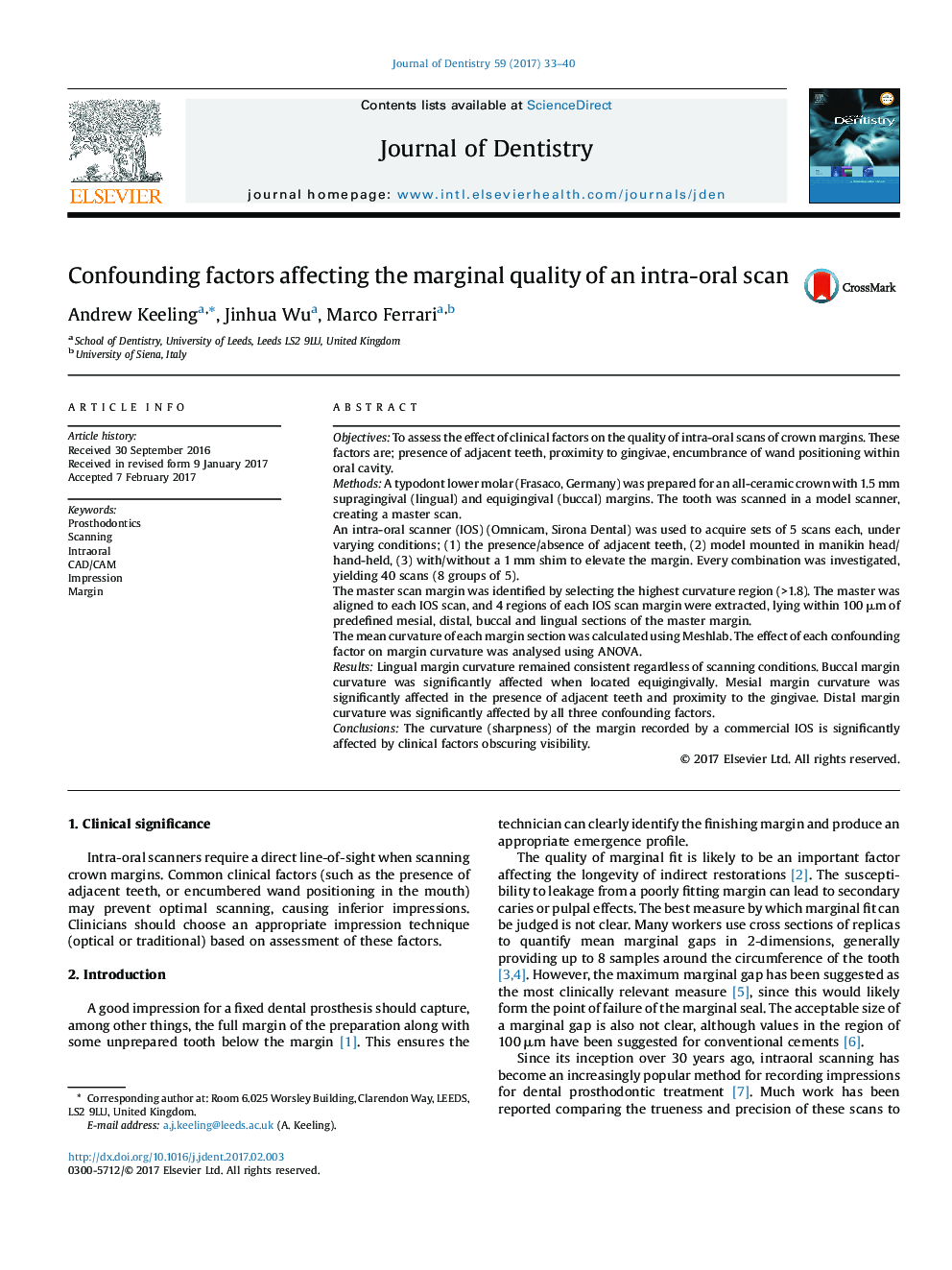| Article ID | Journal | Published Year | Pages | File Type |
|---|---|---|---|---|
| 5640619 | Journal of Dentistry | 2017 | 8 Pages |
ObjectivesTo assess the effect of clinical factors on the quality of intra-oral scans of crown margins. These factors are; presence of adjacent teeth, proximity to gingivae, encumbrance of wand positioning within oral cavity.MethodsA typodont lower molar (Frasaco, Germany) was prepared for an all-ceramic crown with 1.5 mm supragingival (lingual) and equigingival (buccal) margins. The tooth was scanned in a model scanner, creating a master scan.An intra-oral scanner (IOS) (Omnicam, Sirona Dental) was used to acquire sets of 5 scans each, under varying conditions; (1) the presence/absence of adjacent teeth, (2) model mounted in manikin head/hand-held, (3) with/without a 1 mm shim to elevate the margin. Every combination was investigated, yielding 40 scans (8 groups of 5).The master scan margin was identified by selecting the highest curvature region (>1.8). The master was aligned to each IOS scan, and 4 regions of each IOS scan margin were extracted, lying within 100 μm of predefined mesial, distal, buccal and lingual sections of the master margin.The mean curvature of each margin section was calculated using Meshlab. The effect of each confounding factor on margin curvature was analysed using ANOVA.ResultsLingual margin curvature remained consistent regardless of scanning conditions. Buccal margin curvature was significantly affected when located equigingivally. Mesial margin curvature was significantly affected in the presence of adjacent teeth and proximity to the gingivae. Distal margin curvature was significantly affected by all three confounding factors.ConclusionsThe curvature (sharpness) of the margin recorded by a commercial IOS is significantly affected by clinical factors obscuring visibility.
